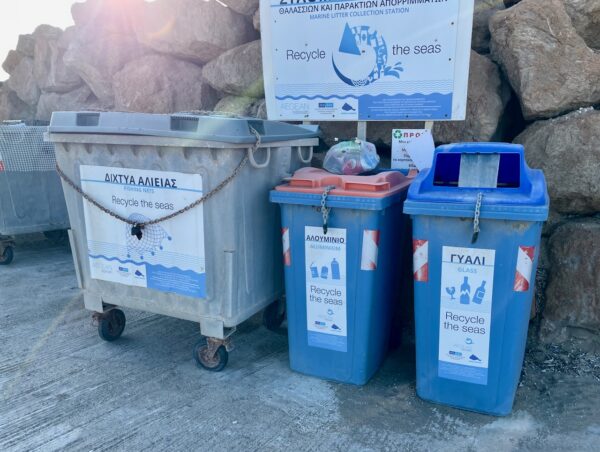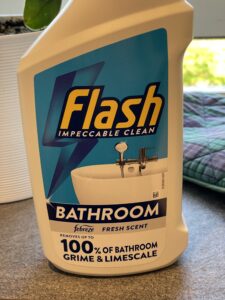There’s an old joke amongst motorhome and campervan owners that everybody buys three vans, in a kind of Goldilocks process.
Your first one is probably something of an impulse buy, and after you’ve learned its limitations (in size, bed dimensions, interior layout, number of berths, or whatever) you then over-compensate, and so buy something that doesn’t work for you in some other way. It’s only on your third van that you have sufficient experience to trade off all the various compromises in a way that works for you.
This is such a common process that I’ve seen articles entitled “How to buy your third van first!”. If you manage to do this, by the way, consider yourself lucky. Buying such vehicles, if they’re even vaguely newish, can be a ridiculously expensive business (only made at all palatable by how well they hold their value after purchase). But if you want to increase the cost even more, do it three times, with the vendors/part-exchangers wanting to make a profit on each transaction!
I’m afraid to say, though, that we managed to fit the stereotype perfectly, and in January we swapped our second van for our third one. And while we’ve always had fun in all of our vans, we’re delighted with this latest incarnation.

At just 5.4m long, it’s only a hand’s breadth bigger than a long-wheelbase Range Rover, and though it’s the most expensive vehicle we will probably ever own, it is at least considerably cheaper than the Range Rover, which may have seven seats but I gather doesn’t even come with a loo! (As my friend Euan Semple would deprecatingly put it, it’s just an SPV: a single-purpose vehicle.)
Anyway, for us, this length was important. You see, different people use their campervans or motorhomes for very different things, and until you have one, you may not know what you enjoy most, and hence what the key criteria are for you. If you plan to drive to Portugal or the south of France and spend a couple of months living in it each year, moving only occasionally, then you probably want something much bigger: something more like a holiday cottage, with comfy sofas, an oven and a television.
But we want a vehicle that’s good for exploring: something we can take into the middle of a village, or deposit in a Sainsbury’s car park, without inconveniencing others or standing out like a sore thumb. Our first van, based on a long-wheelbase VW T5, was great for that. But we soon discovered that we preferred smaller campsites to bigger ones, and these often provide fewer facilities, so we had to be a bit more self-sufficient, and we exchanged the VW for something bigger.
This one was still only 6m, which is still very much at the smaller end of the scale — but we found that we treated it rather differently. We might park it outside a town and cycle in (which meant carrying the bikes). We might have to search a bit longer for a suitable parking space. And we’d be less likely to take it on a day trip somewhere, because it didn’t feel like a drop-in alternative to a car. So, though we had some wonderful trips in it, after a year and a half, we swapped it again.
And this time we bought pretty much the smallest van we could find that still had the facilities we wanted. This lopped two feet off the length, and, I discovered only after we owned it, three feet off the turning circle. I hadn’t really considered this as a key factor, but it’s wonderful. Now, we may still be bigger than most cars, but we’re quite a bit smaller than most Amazon delivery vans.

In the above photo, you can see that we basically fit into standard parking spaces, and I still find it hard to believe that inside our little tardis, there’s a compact but comfy double bed, a small but functional kitchen, an exceedingly good hot water and heating system and even a little wet-room loo/shower. Yes, gentle reader, you could be parked next to us in, say, this car park at the Carsington Water visitor centre and have no knowledge that one of us is reclining on the bed reading while the other enjoys a hot shower!
And though this lacks the spacious seating and expansive table of our previous van, it does have something that was new to us: a fixed bed across the back of the van, always there and always ready to flop into, which doesn’t require you to rotate and fold seats, unroll mattresses, unpack duvets, and then reverse the whole process the following morning. So transitioning from having a place to sleep to having a thing you can drive around is much quicker and easier. Even on a single day trip, you explore a cafe and an art gallery, have lunch, and then enjoy a little siesta in a comfy bed before venturing out again in the afternoon. Heaven! A permanent bed takes lots of space, but underneath it, accessible from the back doors, is a big boot space, in which we can carry things like inflatable kayaks, anchors and outboard motors: something that was much less convenient in the previous van, for all its extra length, thanks to its emphasis on maximising daytime living space.
No van is, of course, perfect, and this certainly wouldn’t work for everyone, but we’ve owned it for a little over 120 days, and I realise that I’ve already spent 22 happy nights in it over that time, despite purchasing it right in the middle of winter! I think that’s a good sign. For this particular Goldilocks, at least, it’s just right!








 I’ve been driving an electric car for about a decade now, but because we also have a fossil-burning campervan, I do still occasionally need to visit one of those dirty, smelly, legacy refuelling stations, so…
I’ve been driving an electric car for about a decade now, but because we also have a fossil-burning campervan, I do still occasionally need to visit one of those dirty, smelly, legacy refuelling stations, so…




Recent Comments